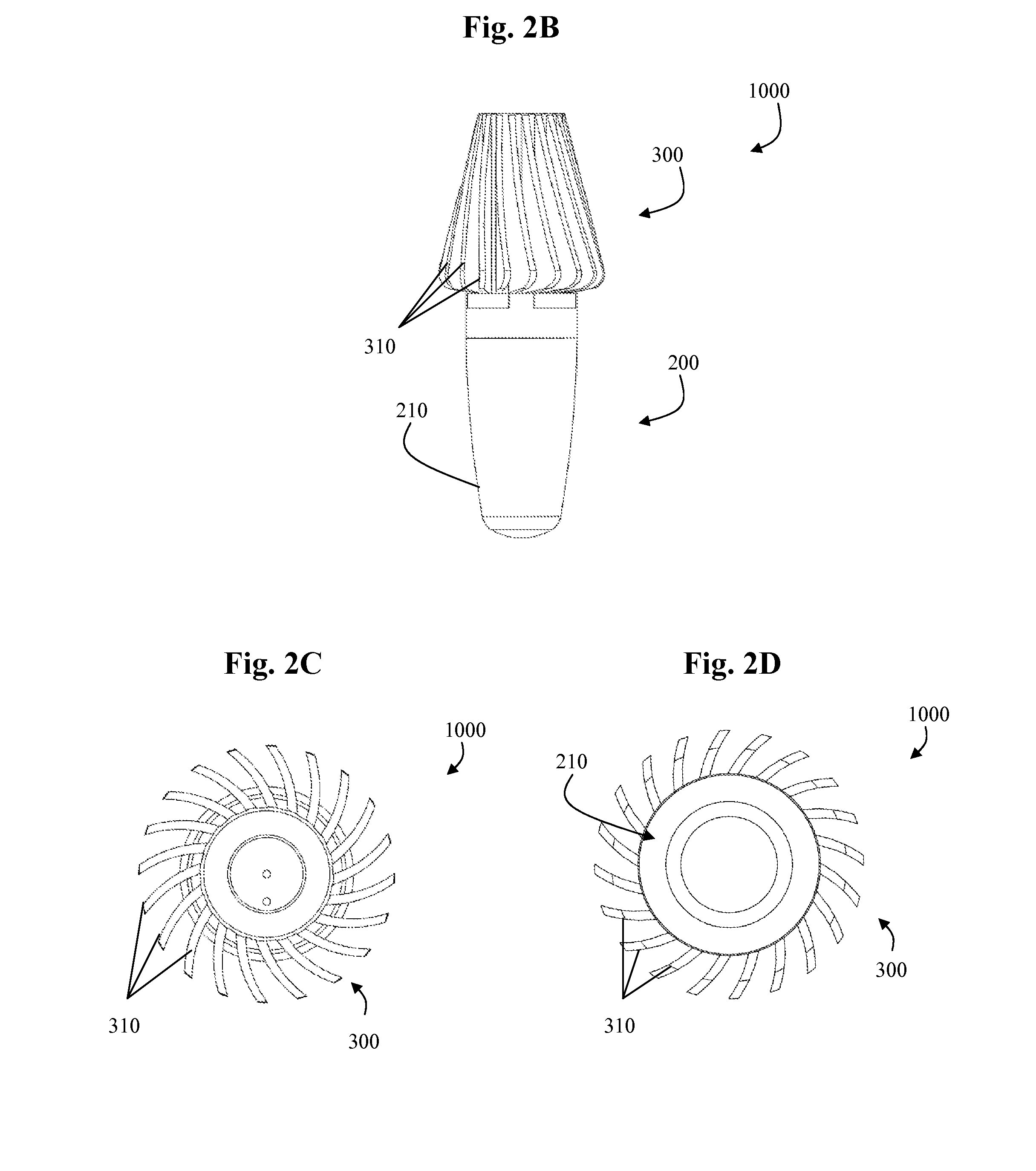Illumination apparatus for conducting and dissipating heat from a light source
a technology of light source and heat dissipation apparatus, which is applied in the direction of lighting and heating apparatus, semiconductor devices for light sources, and light support devices. it can solve the problems of large lag time, large heat dissipation area, and large heat dissipation area, and achieve the effect of facilitating heat conduction
- Summary
- Abstract
- Description
- Claims
- Application Information
AI Technical Summary
Benefits of technology
Problems solved by technology
Method used
Image
Examples
Embodiment Construction
[0042]Although the following detailed description contains many specifics for the purposes of illustration, anyone of ordinary skill in the art will appreciate that many variations and alterations to the following details are within the scope of the invention. Accordingly, the following preferred embodiments of the invention are set forth without any loss of generality to, and without imposing limitations upon, the claimed invention.
[0043]One embodiment of the present inventive illumination apparatus 1000 is illustrated in FIGS. 2A-2D. As shown in FIGS. 2A-2D, the illumination apparatus 1000 may generally comprise an optics module 200 that may be releasably secured to a heat dissipating element 300 via a releasable connection. As further depicted, the heat dissipating element 300 may comprise a plurality of radially projecting fins 310. The Figures also illustrate a lens cover 210 which may encapsulate and enclose other functional components of the optics module 200 there under.
[004...
PUM
 Login to View More
Login to View More Abstract
Description
Claims
Application Information
 Login to View More
Login to View More - R&D
- Intellectual Property
- Life Sciences
- Materials
- Tech Scout
- Unparalleled Data Quality
- Higher Quality Content
- 60% Fewer Hallucinations
Browse by: Latest US Patents, China's latest patents, Technical Efficacy Thesaurus, Application Domain, Technology Topic, Popular Technical Reports.
© 2025 PatSnap. All rights reserved.Legal|Privacy policy|Modern Slavery Act Transparency Statement|Sitemap|About US| Contact US: help@patsnap.com



